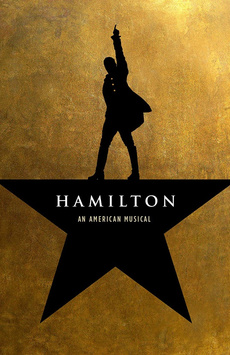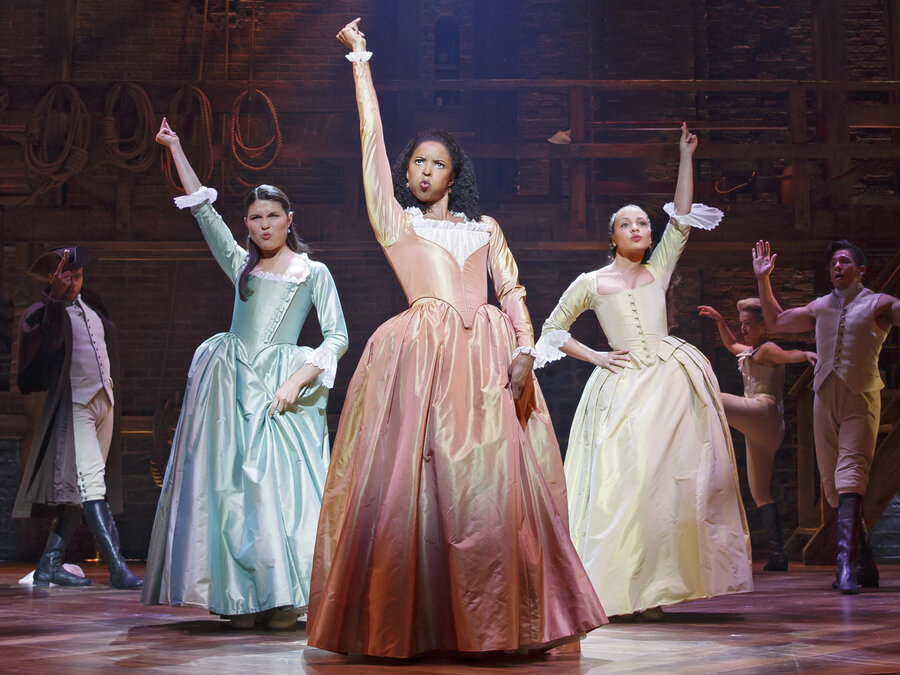 I’m obsessed with Hamilton The
Musical. I finally downloaded the soundtrack a couple of weeks ago (thanks,
VM!). It’s hip-hop-heavy, hilarious, and I sound GREAT (to myself) when I
sing/rap along in my car (with the windows up, of course).
I’m obsessed with Hamilton The
Musical. I finally downloaded the soundtrack a couple of weeks ago (thanks,
VM!). It’s hip-hop-heavy, hilarious, and I sound GREAT (to myself) when I
sing/rap along in my car (with the windows up, of course).
How have I lived my whole life
without Lin Manuel Miranda and his incredibly talented cast? (Tracy fun
fact: I once toured with a children’s theater company for a few months. Yes, I
was Humpty Dumpty as well as Andrew Jackson’s mother....Thank goodness no
photos survive from that pre-social media time!)
Musical theater PLUS history?
With that combo, I’m helpless.....
So as I obsess over the songs,
the story, the parts I know (the Federalist Papers and the 10-dolla’ founding
fatha’) and the parts I didn’t know (founded the Coast Guard and the New York
Post? Personal romance and affairs?), I do what we all do in 2016.
I look it all up.
God bless the internet! Someone,
somewhere has annotated all
the lyrics to the musical. There are references to the real history,
quotes from the historian whose book the musical is based on, and even
explanations of the pop culture (Destiny’s Child homages, Biggie quotes, Rent
references, Eminem moments. I’m so 90s...).
Warning: Despite the obvious education
connection, some of the lyrics are NSFW (Not Suitable For Work). Maybe they’re
NSFS. (Not Suitable For School). Depends on how good you are with the censor
“beep” sound. Or the mute button.
I mean, in additional to
Continental Army bombs, there are f-bombs.
It occurs to me, in between
singing along and being non-stop that annotation
is a powerful skill that our kids don’t use enough. (Or I didn’t have my
kids use it enough. Maybe your kids use it more).
AnNOTation is simply a skill of
making a NOTE or comment to a text, illustration, or book.
It’s a fancy, historian way of
describing text-marking where the NOTE-WRITER is doing the thinking, making an
explanation, summary, or other markup related to a particular part of the
document.
 It’s also a way of CLOSE READING.
Alexander Hamilton has over 60,000
pages of primary sources on the Gilder Lehrman Institute. You
can’t get through even one without slowing down and annotating.
It’s also a way of CLOSE READING.
Alexander Hamilton has over 60,000
pages of primary sources on the Gilder Lehrman Institute. You
can’t get through even one without slowing down and annotating.
(And You can’t annotate what you
don’t dig into)
Annotation is a NOTE made DURING reading, such as:
·
Important things/key ideas
·
Clarifying questions/answers
·
Defining tricky words
·
“I Wonder” questions
·
Opinions.
What we’re really talking about is aligning our reading with
a purpose. Kids should learn HOW to annotate, of course, but they need a reason
to annotate. WHY would they bother to add notes to a document?
 There has to be a task coming to make it worthwhile. A wait-for-it-wait-for-it-wait-for-it “Big Question” for which they
need evidence.
There has to be a task coming to make it worthwhile. A wait-for-it-wait-for-it-wait-for-it “Big Question” for which they
need evidence.
Like a DBQ, if you can ask your kids “What Makes Hamilton a
‘Founding Father’?” or (more timely this week) “Does Hamilton Deserve to Stay
on the $10 Bill”? Or “If You were in Congress, Would You Vote For Hamilton’s
Financial Plan?”
Then, have your kids annotate the parts that will help them
answer the big question.
You can annotate anything.
Try the Preamble:
Annotate a map:(Preferably with a
little more than one word.)
 Really, with sticky notes, write-and-wipes
, ISNs, and the occasional (gasp!) write-on-student-copy, there are
numerous ways to make this work,
work, work.
Really, with sticky notes, write-and-wipes
, ISNs, and the occasional (gasp!) write-on-student-copy, there are
numerous ways to make this work,
work, work.  Plus, When students MAKE notes
(instead of taking notes) they MAKE their own conclusions, their own
questions, and their own learning. It should help you see their minds
at work, to make their thinking visible. They’re engaging with the
text.
Plus, When students MAKE notes
(instead of taking notes) they MAKE their own conclusions, their own
questions, and their own learning. It should help you see their minds
at work, to make their thinking visible. They’re engaging with the
text.
It’s not owned by the teacher.
The kids are making the meaning. That’s powerful. That
would be enough.
Do you do this? I’d love to hear about it ...
or be in the room
where it happens. Let me know about teaching
annotation and how you find it’s most effective in your classroom. Email me newmantr@pcsb.org
Your
obedient servant, (that phrase might be my new “bless your heart”)
Tracy
Tracy
Newman
Reading-in-Social
Studies Coach




